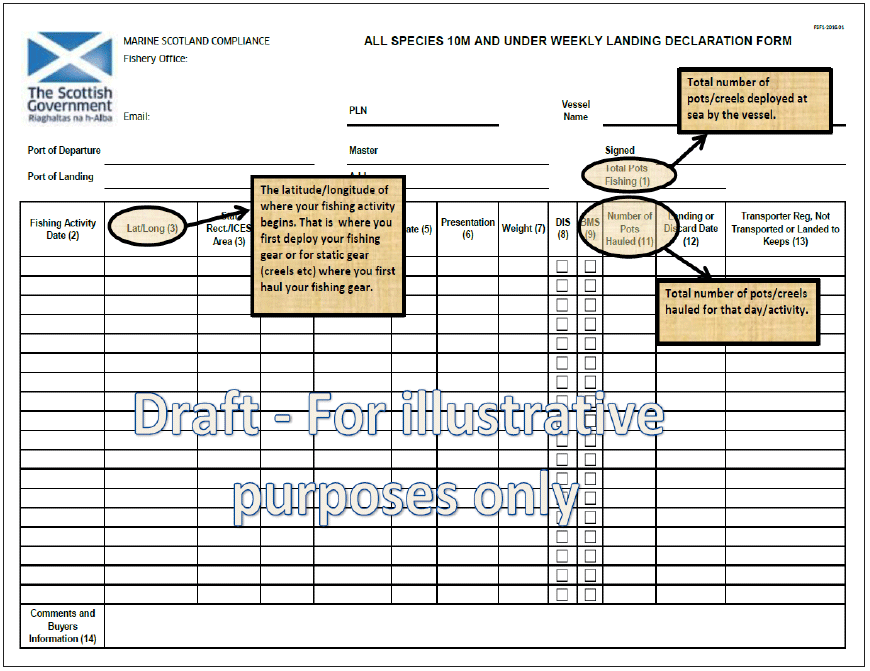Creel fishing: effort study
Report to assess the environmental sustainability of fish stocks and the socioeconomic efficiency of fishing activity.
4. Reporting - Fish1 Forms
The reporting of effort data for creel vessels has been inconsistent to date. Basic effort information is submitted via electronic logs for vessels over 12 metres in length, via paper logbooks for 10-12 metre vessels and via Fish1 forms for under 10 metre vessels in Scotland. Reporting effort data (creel numbers) on Fish1 forms has been voluntary because of the perceived burden to small-scale fishers and given this, limited guidance was supplied to clearly communicate the type of data required. During this survey, fishers were asked if they previously submitted this voluntary information on their Fish1 forms, if so, what is represented by the data they reported.
Data showed that 63% of those vessels surveyed submitted effort data (creel numbers). Of those, 53% of vessels said they reported their deployed (in water) effort. 26% reported this figure as the average amount of creels hauled per day, 16% as the number of creels owned and 5% reported that they did not know what was reported as someone else completed the form.
Because of these inconsistences, in June 2016, based on the preliminary finding from this survey, a new Fish1 form was introduced to improve reporting of effort data in creel fisheries. Data requirements were reviewed and changes have now been made to licence agreements so effort reporting is now mandatory. Under this agreement, fishers are now required to report: 1) total number of creels deployed each week; 2) total number of creels hauled to obtain the reported catch and; 3) the start location (latitude and longitude) of deployed creels (Fig. 21).
In addition to this new data source for monitoring effort, a research programme called Scottish Inshore Fisheries Integrated Data System ( SIFIDS) funded by the European Maritime Fisheries Fund ( EMFF) has commenced which aims to develop an integrated system for the collection, collation, analysis and interrogation of data from the Scottish inshore fishing fleet. The project will focus on the inshore fleet where data on the location of fishing activity and effort is currently lacking. This is set to assist in: 1) marine spatial planning in an increasingly busy marine environment; 2) Marine Scotland's intension to implement vessel monitoring to inform on the footprint of inshore fishing to ensure that stocks are exploited sustainably (fished at Maximum Sustainable Yield); and, 3) improving stakeholders participation in fisheries governance. The SIFIDS project will work alongside fishers to develop and test technology to automatically collect and collate data on board vessels, thereby reducing the reporting burden on fishers. For more information on this project please see the project website at: http://www.masts.ac.uk/research/emff-sifids-project/.
Figure 21: Updated Fish1 forms with effort variables

Contact
Email: Estelle Jones, estelle.jones@gov.scot
Phone: 0300 244 4000 – Central Enquiry Unit
The Scottish Government
St Andrew's House
Regent Road
Edinburgh
EH1 3DG
There is a problem
Thanks for your feedback